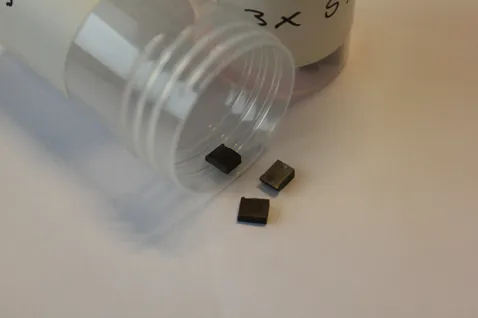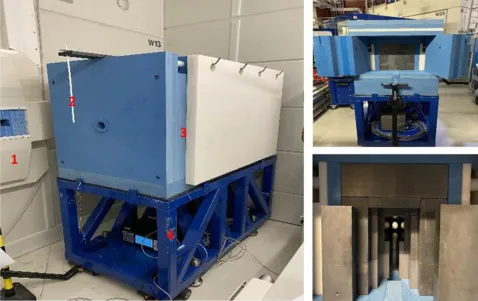News
New data for the analysis of critical raw materials
Wissenschaft, Instrumente |
Materials for batteries, wind turbines, and reactor technology
The researchers examined nickel, zirconium, lanthanum, and praseodymium using the FaNGaS spectrometer. Nickel and lanthanum are used in batteries for electric and hybrid vehicles, which play a significant role in advancing electromobility—a key technology in combating climate change. Zirconium is primarily valued in the nuclear energy sector for its use in fuel cladding, as it is significantly more radiation-resistant than the stainless steel alloys previously employed. This enhances the safety and efficiency of modern reactors. Praseodymium is crucial in the production of powerful magnets used in wind turbines, enabling efficient energy conversion.
Critical raw materials
Lanthanum and praseodymium are classified as “critical” by the European Commission due to their limited availability and high demand.
This makes it even more important to develop sustainable methods for precise compositional analysis of the raw materials, ensuring that both the primary constituents and any impurities or foreign elements—which might compromise the material’s performance or safety—are accurately identified.


Neutrons for examining large samples
Dr. Eric Mauerhofer and Dr. Iaroslav Meleshenkovskii from Forschungszentrum Jülich, along with Dr. Christian Stieghorst and Dr. Zsolt Révay from FRM II, utilised the FaNGaS instrument at MLZ to determine the partial differential cross sections of gamma rays emitted from the inelastic scattering of fission neutrons. These measurements not only demonstrate that FaNGaS is a unique instrument for obtaining crucial nuclear data and for the non-destructive analysis of thick and dense samples, but they also contribute to the update of the (n,n′,γ) reactions data catalogue, enriching our understanding of nuclear interactions. “Notably, MLZ is one of the few facilities in the EU capable of providing a fission neutron beam—thanks to a special converter installed at FRM II”, says Melenshenkovskii.
The derived data were obtained using an advanced fast neutron based analytical technology—PGAINS (Prompt Gamma Analysis based on Inelastic Neutron Scattering). The PGAINS method, which leverages high-energy fission neutrons, offers several advantages: the ability to analyze thicker and denser samples, improved sensitivity to some elements, reduced activation, and rapid analysis. This approach facilitates the sustainable handling and recycling of such critical raw materials in the context of a circular economy.
“This method allows for the non-destructive analysis of larger and thicker samples compared to established techniques based on cold or thermal neutrons,” explained Meleshenkovskii. “We now have a promising tool to analyze challenging samples that are several centimetres thick and dense. These samples can come from fields such as archaeology, geology, industry, and fundamental research.”
Original publications:
Eric Mauerhofer, Niklas Ophoven, Zeljko Ilic, Christian Stieghorst, Zsolt Révay, Iaroslav Meleshenkovskii, Tsitohaina H. Randriamalala
Gamma emission from interaction of fission neutrons on nickel and zirconium
Journal of Radioanalytical and Nuclear Chemistry (2024) 333:4333–4352
DOI: https://doi.org/10.1007/s10967-024-09570-y
Niklas Ophoven, Eric Mauerhofer, Zeljko Ilic, Christian Stieghorst, Zsolt Révay, Iaroslav Meleshenkovskii, Tsitohaina H. Randriamalala
Prompt gamma rays of lanthanum and praseodymium produced by inelastic scattering of fission neutrons
Journal of Radioanalytical and Nuclear Chemistry (2024)
DOI: https://doi.org/10.1007/s10967-024-09821-y
Further information:
In addition to researchers from Forschungszentrum Jülich and the Technical University of Munich, scientists from RWTH Aachen University and the University of Cologne were also involved in the study.
